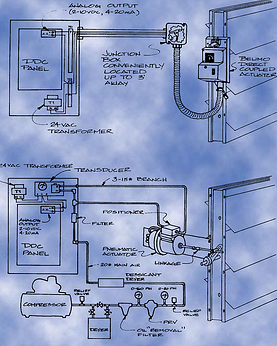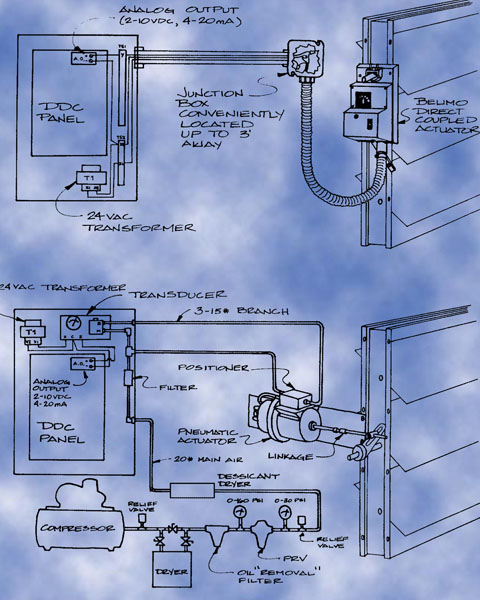Electronic or Pneumatic Actuation
In 1975, pneumatic actuators accounted for 50% of the actuators used in Europe. Today, 95% of those installed are electronic and, in Japan, 80%. Pneumatic actuators, at one time were cost effective but are no longer well-suited for modern electronic controllers. They need interfaces which add expense and degrade the signal from the high quality control outputs now available. To meet the needs of DDC processor control, the introduction of a precision direct coupled actuator which is more reliable than the pneumatic hybrid (actuator, positioner and transducer), has a lower first cost in 90% of applications, a significantly lower life cycle cost in just about 100% of applications, and has all the advantages of pure electric (outside use and no compressor problems). Electric actuators provide: simpler installation, control features which pneumatic cannot provide, maintenance free longer life, flexibility for changes, and a positioning resolution as high as 160:1 - accuracy as high as the DDC electronic output signal.
actuators, at one time were cost effective but are no longer well-suited for modern electronic controllers. They need interfaces which add expense and degrade the signal from the high quality control outputs now available. To meet the needs of DDC processor control, the introduction of a precision direct coupled actuator which is more reliable than the pneumatic hybrid (actuator, positioner and transducer), has a lower first cost in 90% of applications, a significantly lower life cycle cost in just about 100% of applications, and has all the advantages of pure electric (outside use and no compressor problems). Electric actuators provide: simpler installation, control features which pneumatic cannot provide, maintenance free longer life, flexibility for changes, and a positioning resolution as high as 160:1 - accuracy as high as the DDC electronic output signal.
The Issues
In deciding between electronic or pneumatic actuation, the real factors should be: accuracy, reliability, first cost and life cycle cost. Download this complete application guide now and understand the differences between electronic verse pneumatic actuation.

